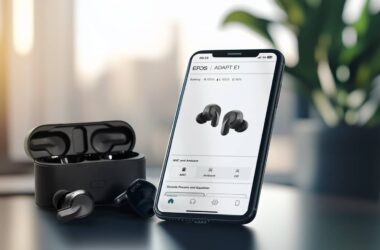Think your home broadband connection is fast? Telstra just proved 4G is one of the fastest connection types on the planet, breaking through the 2Gbps mark.
Last year saw a few phones manage some amazeballs speed thanks to some pretty stellar modems and equally impressive telecommunications networks, but 2018 has just found a way to beat them again.
While all the rage last year might have been about the 1Gbps on offer from Category 16 4G modems — the technology found inside the Samsung Galaxy S8, Samsung Galaxy Note 8, HTC’s U11, and Sony’s Xperia XZ Premium — the technology is now technically old hat, as Telstra has teamed up with Ericsson, Qualcomm, and Netgear to beat it again.
The news comes from Ericsson, as it reports that the quartet worked together to achieve a staggering 2Gbps using a new Qualcomm chip inside Netgear’s latest Nighthawk mobile router, and the world’s first mobile device to sport Qualcomm’s Snapdragon X24 LTE modem capable of hitting those incredible speeds.
“With the ever-increasing demand for data and the need to provide our customers with a superior user experience, we are always striving to provide new solutions and develop advanced technologies,” said Mike Wright, Managing Director of Networks at the Telstra Group.
“This achievement demonstrates our continued LTE innovation, providing our customers with an unrivalled network experience and preparing our networks for future growth,” he said.
Australia is one of but a handful of places around the world where a test like this makes sense, and with Telstra’s network supportive of speeds that break through the 1Gbps mark, finding out that it can technically hit 2Gbps is pretty impressive.
As such, there’s a fairly strong likelihood that we’re going to see some phones and mobile devices sporting this new chip and 4G technology when Mobile World Congress starts at the end of February.
Locally, those speeds may still yet be unattainable, as 4G speeds pushing into the 1Gbps mark are rare enough at the best of times. Somewhere between needing to be in the right place at the right time, the moon aligning, and there not being a tremendous amount of people using the network appears to be the right amount of factors, but all jokes aside, at least one Australia network is capable of the speeds.
Granted, the catch in all of this is data cost, because downloading at a rate of 2Gbps technically translates to 250MB per second, making for not just super fast downloads, but a likelihood that if you can connect at those speeds, you’re going to chew through your data ridiculously quickly. That means that even if you get those speeds, you’re going to be paying for data top-ups when they do come, and probably quickly.
Still, it’s a good step forward, especially as we’re all trying to get online faster than ever, and hoping that a high speed technology connects our homes online, as well.
Expect to see more from the 2Gbps world at Mobile World Congress in just a few days. As always, we’ll let you know when we hear more.






